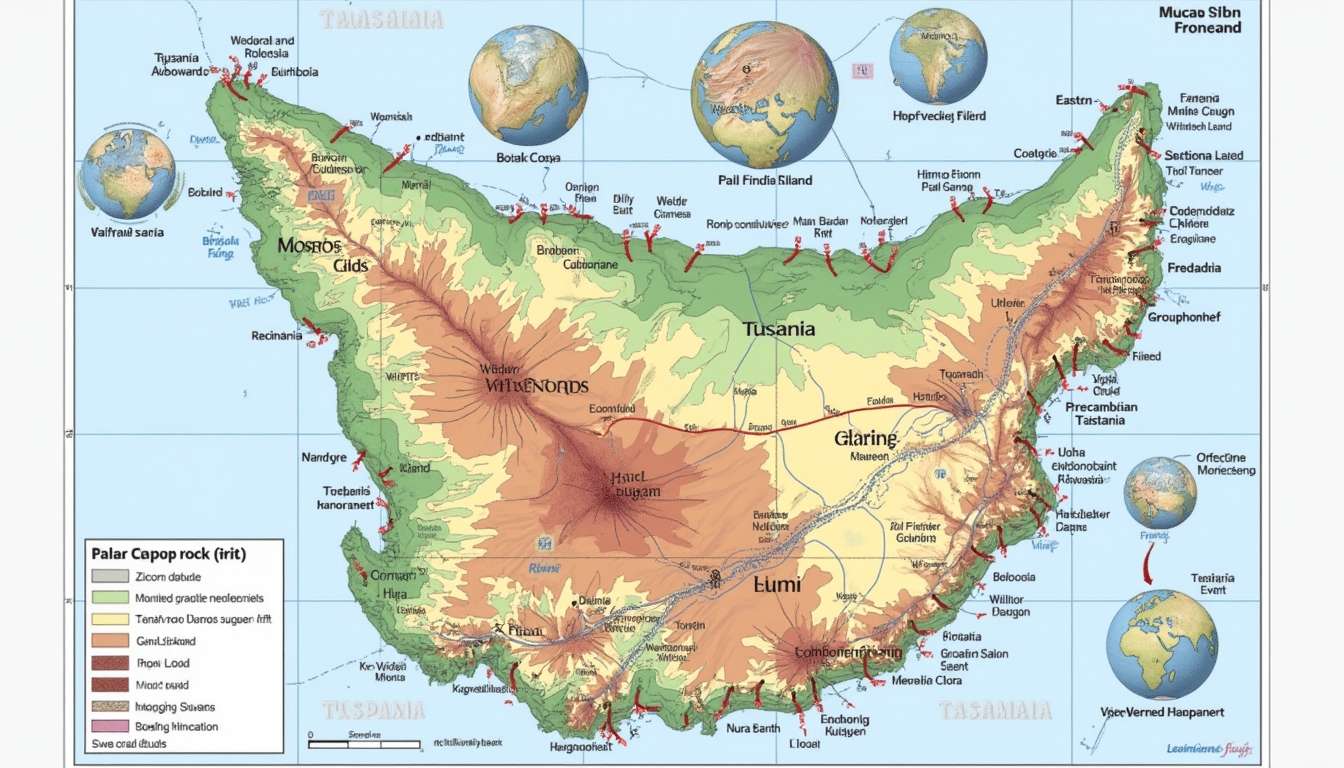The zircon concentration and separation process is a sophisticated scientific technique crucial for geochronological studies and understanding Earth's geological history. By isolating microscopic zircon crystals from complex rock samples, scientists can unlock valuable information about the age and formation of geological structures. This article delves into the meticulous steps involved in concentrating and separating zircon minerals, highlighting the importance of each phase in achieving high-purity samples for advanced analysis.
What Is the Zircon Concentration and Separation Process?
The zircon concentration and separation process involves a series of precisely orchestrated steps designed to isolate zircon crystals from bulk rock samples. Scientists typically begin with substantial rock specimens, often weighing around 1 kilogram, and meticulously reduce them to less than 1 gram of zircon-rich concentrate through a multi-step procedure.
Zircon (ZrSiO₄) is prized in geological studies because it can retain isotopic information over billions of years, making it an essential tool for dating rocks and understanding Earth's history. Its robustness against geological events like metamorphism and erosion makes it a reliable mineral for such analyses.
This specialised process relies fundamentally on zircon's unique physical properties, particularly its exceptionally high density of 4.6–4.7 g/cm³. By leveraging these density differentials through gravitational and magnetic separation techniques, researchers can systematically extract these tiny geological time capsules.
Moreover, advancements in mining technologies have revolutionised how minerals are extracted and processed. Just as digital twins are transforming mining by boosting efficiency and sustainability, innovative methods in mineral separation enhance the accuracy and reliability of geological studies.
Why Reduce Rock Samples to Less Than 355 Micrometres?
Reducing rock samples to particles smaller than 355 micrometres (μm) is a crucial preparatory step in the zircon concentration workflow. This precise particle size ensures uniform distribution, significantly improving the efficiency of separation techniques by preventing the interlocking of coarse mineral fragments.
Graduate student research demonstrates that crushing 20 rock samples can consume 40–60 hours of dedicated laboratory time, highlighting the labour-intensive nature of this critical preparatory phase. Mechanical crushing, using tools like jaw crushers and disc mills, coupled with standardised sieving techniques, enables researchers to achieve the desired particle size while protecting downstream equipment from potential clogging.
The 355 μm standard corresponds to the US Standard #45 sieve specification, providing a scientifically validated benchmark for sample preparation. By maintaining consistent particle sizes, researchers can optimise gravitational concentration techniques and minimise variability in subsequent analytical processes.
In the broader context of mineral extraction, precise sizing is akin to practices in the geology of ore deposits, where understanding particle size distribution is essential from Earth's core to economic mineral concentrations.
How Does the Zircon Concentrator Table Work?
The zircon concentrator table is an ingenious device that mirrors the principles of traditional gold panning but is specifically adapted for microscopic mineral separation. Developed by experts like Dr Chris Mattinson and colleagues, this specialised equipment uses controlled vibration, precise water flow (approximately 17 gallons per hour), and strategic agitation to concentrate zircons across ten distinct grooves.
Operating on the principles of density separation, the table effectively traps dense zircon grains while allowing lighter materials to wash away. As the slurry of crushed rock particles flows over the table, denser minerals like zircon settle into the grooves, while lighter minerals such as quartz and feldspar are washed off.
Intermediate vacuum stages remove fine dust that might otherwise clog the concentration grooves, ensuring a clean and efficient separation process. Researchers validate zircon presence through fluorescence techniques, typically employing shortwave ultraviolet light to identify these distinctive mineral grains. This method significantly reduces reliance on toxic heavy liquids like methyl iodide, representing a more environmentally conscious approach to mineral concentration.
Such innovative approaches in mineral processing are part of a broader trend towards improving safety and efficiency in the mining industry. For instance, revolutionising mining with virtual reality enhances training and operational procedures, much like new technologies improve mineral separation techniques.
What Steps Prevent Cross-Contamination During Separation?
Preventing cross-contamination is a critical concern in zircon separation protocols due to the minute size of zircon grains and the potential for sample integrity to be compromised. Laboratories implement multiple strategies to ensure samples remain uncontaminated throughout the process:
- Single-use pipettes: Employed for precise material extraction to prevent cross-contact between samples.
- Rigorous storage protocols: "Light" and "heavy" mineral fractions are kept completely segregated.
- Deionised water rinses: Utilised to remove residual sediments and potential contaminants from equipment and samples.
- Comprehensive cleaning procedures: Equipment is meticulously cleaned between samples, often using ultrasonic baths and specialised solvents.
An expert in the field emphasises, "It's so small, it's easy to get contamination between samples," underscoring the importance of stringent handling and separation protocols. Maintaining sample purity is essential for the reliability of geochronological data obtained from zircon grains.
In industrial practices, similar attention to contamination is crucial. For example, Glencore and Cyclic Materials' strategic alliance focuses on revolutionising copper recycling while ensuring material purity and reducing environmental impact.
Why Is Magnetic Separation Crucial for High-Purity Zircon?
Magnetic separation is a pivotal stage in achieving high-purity zircon concentrates. After gravitational methods have isolated the denser minerals, magnetic separation further refines the concentrate by removing iron- and magnesium-rich mineral grains, such as biotite and hornblende.
Using specialised equipment like the Frantz electromagnetic separator, researchers carefully adjust amperage and vibration settings to guide magnetic minerals along distinct paths, effectively isolating non-magnetic zircon grains. This process can significantly enhance sample purity, reducing ferromagnetic mineral content from 2.1% to less than 0.03%.
Precise control of the separator's settings is essential. Typical parameters might include:
- Forward slope: Set at 15 degrees.
- Side slope: Adjusted to 10 degrees.
- Feed rate: Carefully controlled to ensure optimal separation.
- Current settings: Incrementally increased to capture minerals with varying magnetic susceptibilities.
Clearly labelled protocols and frequent equipment cleaning serve as essential trust markers, ensuring the reliability and reproducibility of scientific data derived from these carefully prepared mineral concentrates.
Advancements in mineral processing techniques are vital for the future of mining and resource management. Similar to how Macquarie's bold gold price forecast predicts trends in the commodities market, refining separation processes ensures the quality of minerals for economic and research purposes.
Additional Research Recommendations
Future research in zircon concentration and separation should focus on expanding datasets, particularly by analysing samples from diverse geological contexts. Embracing interdisciplinary approaches can lead to new insights into Earth's formation and tectonic activities.
Recommendations include:
- Expanding sample diversity: Collecting samples from various geological environments to enhance the robustness of geochronological models.
- Involving students: Undergraduate and graduate students can contribute by studying lighter mineral fractions, gaining additional petrological insights and hands-on experience.
- Long-term project continuity: Ensuring that multiple generations of researchers can leverage existing zircon separates, fostering collaboration and cumulative knowledge.
Maintaining comprehensive records and archiving all mineral fractions supports reproducible scientific methodologies. By continually refining separation techniques and expanding our understanding of mineral concentration processes, researchers can unlock increasingly sophisticated insights into Earth's complex geological history.
Moreover, embracing innovative technologies in mining and mineral processing, similar to how digital twins are transforming mining, will enhance the efficiency and sustainability of geological research.
Conclusion
The zircon concentration and separation process is a meticulous and essential procedure in geochronology, providing critical insights into Earth's history. Through precise mechanical crushing, sieving, gravitational and magnetic separation, and stringent contamination prevention measures, scientists can obtain high-purity zircon samples necessary for advanced analytical techniques like U-Pb dating.
As technology advances, integrating innovative methods and interdisciplinary collaboration will further enhance the efficiency and accuracy of zircon concentration. By adopting sustainable practices and leveraging cutting-edge technology, the field will continue to contribute vital information about our planet's geological past and future.
Want to Unlock the Next Significant Mineral Discovery?
Transform your mineral investment strategy with Discovery Alert's real-time, AI-driven alerts tailored for uncovering opportunities hidden in complex geological data. Whether you're keen on short-term trades or long-term investments, experience the advantage by starting your 30-day free trial today at Discovery Alert.







